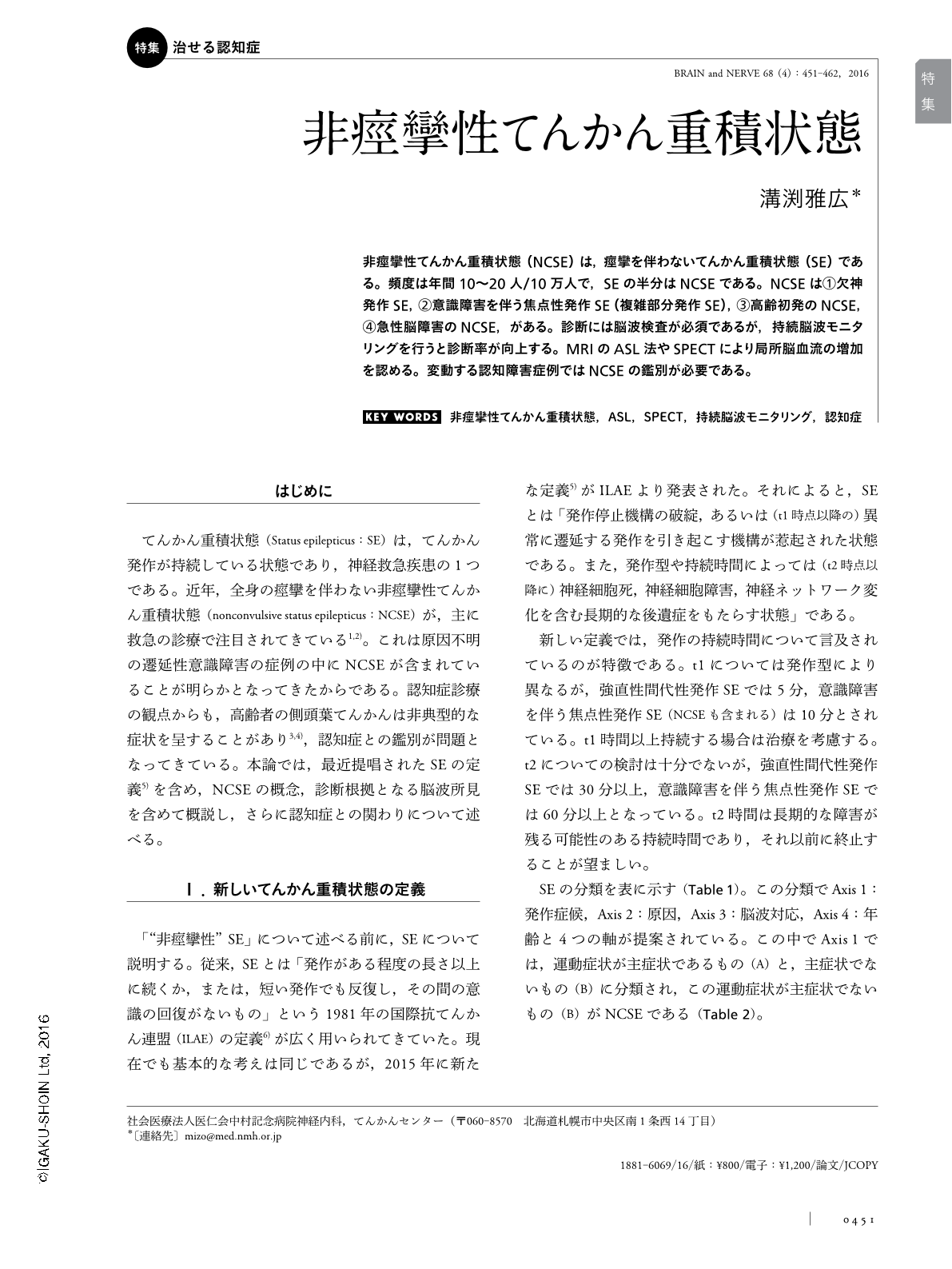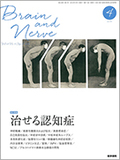Japanese
English
- 有料閲覧
- Abstract 文献概要
- 1ページ目 Look Inside
- 参考文献 Reference
非痙攣性てんかん重積状態(NCSE)は,痙攣を伴わないてんかん重積状態(SE)である。頻度は年間10〜20人/10万人で,SEの半分はNCSEである。NCSEは①欠神発作SE,②意識障害を伴う焦点性発作SE(複雑部分発作SE),③高齢初発のNCSE,④急性脳障害のNCSE,がある。診断には脳波検査が必須であるが,持続脳波モニタリングを行うと診断率が向上する。MRIのASL法やSPECTにより局所脳血流の増加を認める。変動する認知障害症例ではNCSEの鑑別が必要である。
Abstract
Nonconvulsive status epilepticus (NCSE) is a type of status epilepticus (SE) lacking a predominant motor manifestation. The annual prevalence of NCSE is estimated to reach 10 to 20 cases in every 100,000 people. While almost half of all SE cases are nonconvulsive, there are several different types of NCSE: 1) epileptic absence SE, 2) epileptic focal seizure SE with consciousness disturbance (complex partial SE), 3) de novo NCSE of late onset, 4) NCSE due to acute brain injury or prolonged consciousness disturbance after convulsive SE. An electroencephalography (EEG) evaluation is necessary to diagnose NCSE. However, continuous EEG (cEEG) monitoring over at least 24 hours is preferable to detect NCSE, as cognitive disturbances due to this condition may fluctuate over time. In addition, neuroimaging techniques, such as MRI with arterial spin labeled sequences or single photon emission computed tomography (SPECT) can demonstrate hyperperfused areas in cases of focal onset. Thus, patients presenting with alternative cognitive disturbance with or without mild confusion should be evaluated using cEEG monitoring or blood flow imaging so as not to overlook treatable NCSE.

Copyright © 2016, Igaku-Shoin Ltd. All rights reserved.


